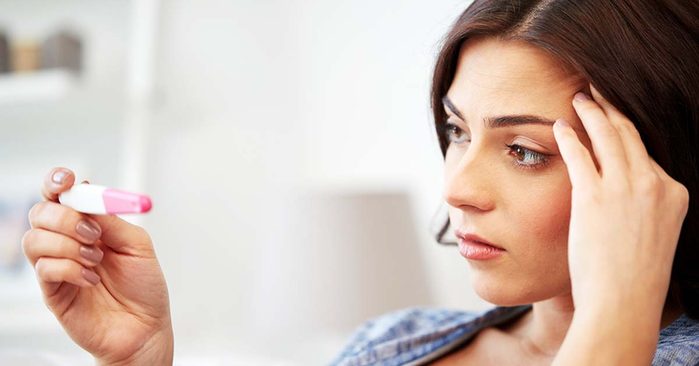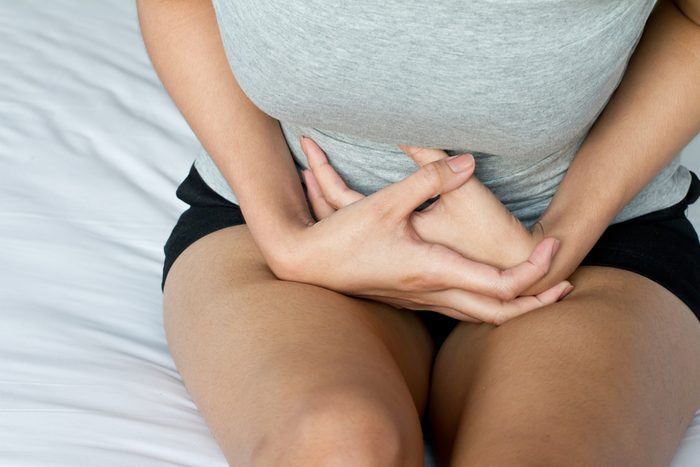
What is endometriosis?
Endometriosis happens when tissue similar to the type found lining the inside of the uterus grows in other places in the body. Endometriosis is most commonly found on the ovaries, fallopian tubes, and the back part of the uterus, but endometrial tissues can potentially grow anywhere. Doctors have reported finding endometrial tissue in the abdomen, bladder, kidneys, lungs, and diaphragm, although these locations are much less common. In people with endometriosis, the endometrial tissue continues to act as it would as if still inside the uterus. The tissue growing on other organs still follows the menstrual cycle, swelling up and bleeding every month. While not life-threatening, endometriosis can be debilitating, causing painful, heavy periods; infertility; bloating; painful sex; and other problems.
There are several theories about what causes endometriosis; the most common is Sampson’s Theory, also known as retrograde menstruation. During retrograde menstruation, endometrial cells get out of the uterus through the fallopian tubes and implant on tissues inside the abdomen, says Gretchen Glaser, MD, a physician in gynecologic surgery at Mayo Clinic in Minnesota. Pay attention to these endometriosis symptoms and talk to your doctor if you’re concerned. (Plus, learn why doctors so often miss or misdiagnose endometriosis.)
You have pain before, during, and after your period
Pain is the most common symptom of endometriosis. Pain starts a few days before a person’s period, can last through the period, and continue for a couple of days after, says Dr. Glaser. Some pain associated with a period is normal, but when pain becomes unmanageable and lasts for a long time, it could be a symptom of endometriosis. “When women find that they have to stay home from school or they have to stay home from work, they’re vomiting, or that they can’t function essentially during their period, that’s a good time to get checked out,” says Dr. Glaser.
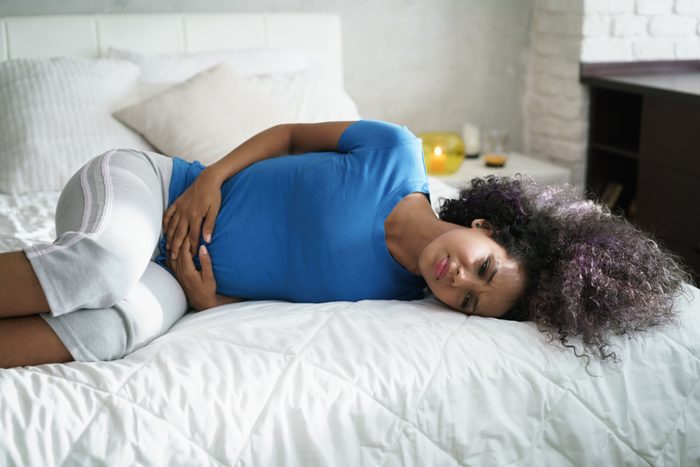
You have pelvic pain all the time
Over time, pelvic pain can become chronic and cause women to experience pain continuously, not just around their period. Some women also start to experience painful sex. Women can feel a sense of heaviness in the pelvis as well as dull and crampy pain, says Dr. Glaser. Chronic pelvic pain or pressure also can be caused by ovarian endometriomas, which are cysts on the ovaries. Dr. Glaser says women can develop endometriomas when the endometrial tissue grows inside the ovaries and forms a mass. (These are the signs of ovarian cancer women are likely to miss.)

Your periods have been painful from the beginning
Most women experience mild discomfort while on their period. When women complain of having extremely painful periods from the start—the kind that weren’t alleviated by over-the-counter pain relievers and kept them home from school—this could be a powerful symptom of endometriosis. “What makes us really highly suspicious is typically when I talk to women and they tell me that when they started having periods they were really pretty uncomfortable right up front and the pain started with their periods,” says Laura Douglass, MD, ob-gyn and assistant professor at the University of Chicago. People with endometriosis also experience a long and/or heavy menstrual flow.
You’ve been struggling to get pregnant
If you’re having difficulty conceiving, endometriosis might be the cause. If endometrial tissue grows on the fallopian tubes, it can cause scarring, blockages, or kinks in the tubes, limiting an egg’s ability to be fertilized, says Monica Christmas, MD, assistant professor of obstetrics and gynecology at the University of Chicago. “Blood [from endometriosis] is a very irritating substance to the inside of the abdomen, and that released blood causes adhesions or scar tissue to form, which can make it difficult for women to get pregnant,” says Dr. Glaser. Additionally, the location of the endometriosis can impact fertility. For example, women who develop endometriosis on the ovaries might experience more trouble conceiving that women whose endometriosis is present elsewhere.
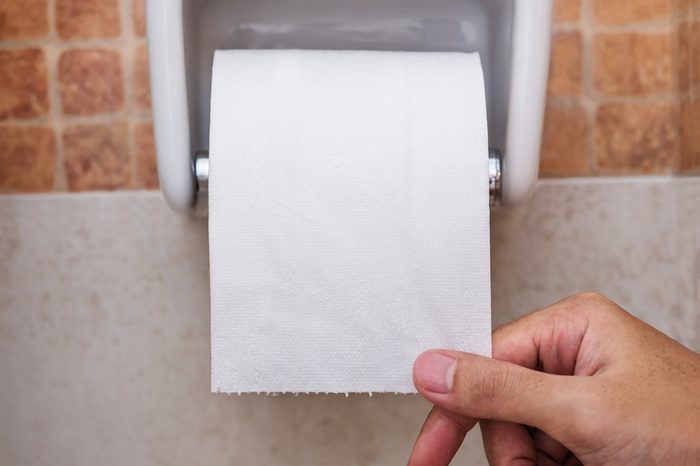
You’re using the bathroom all the time
Frequent urination can be a sign of many conditions, but is associated with endometriosis as well. If a woman experiences an increased need to urinate, especially along with other symptoms, it could be a symptom of endometriosis.
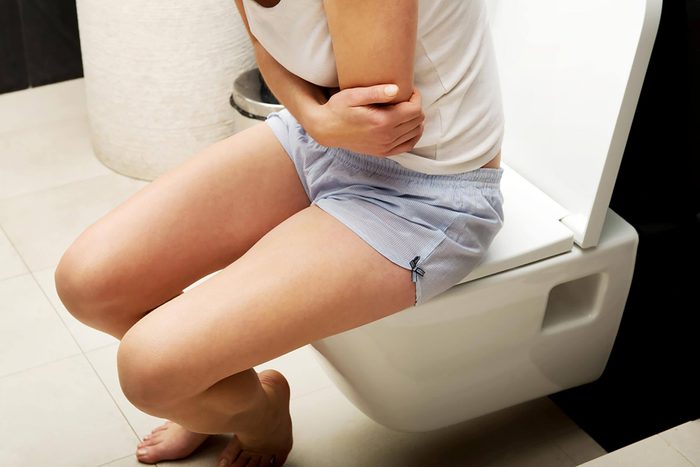
You have difficulty with bowel movements
Endometriosis can affect other bathroom habits, including causing painful bowel movements, says Dr. Douglass. “If the implants affect the bowels, women can experience constipation and pain with defecation,” says Dr. Christmas.
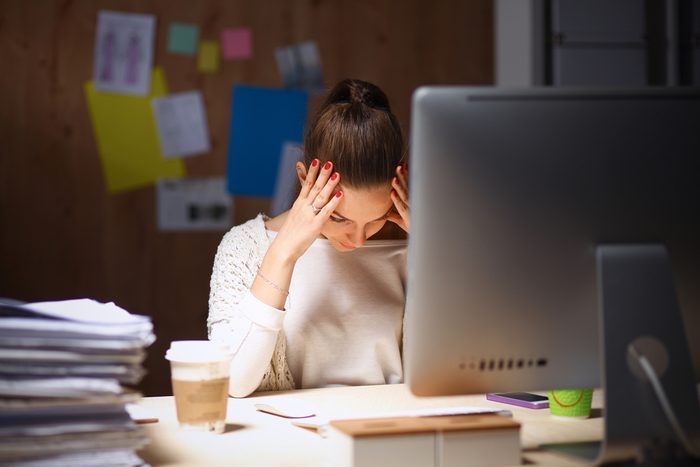
You feel wiped out
Some women experience fatigue as an endometriosis symptom. While it might be fatigue in and of itself, fatigue is more likely to come from constantly feeling uncomfortable and experiencing chronic pain from the endometriosis, says Dr. Douglass.
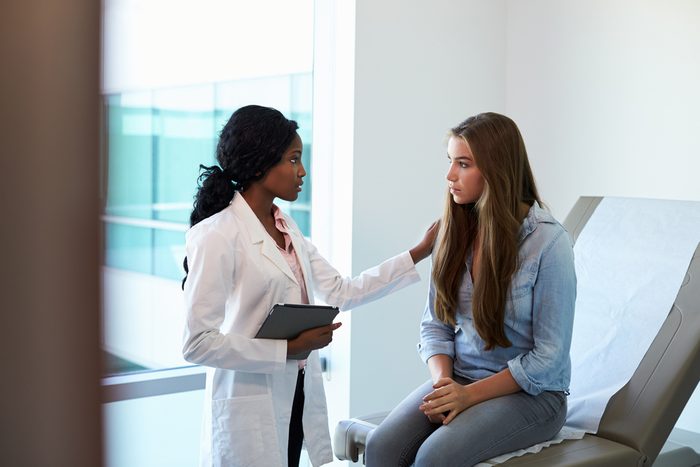
What to know about treatments for endometriosis
Endometriosis has many treatment options, from medical pain management to surgical interventions. Dr. Douglass says she likes to manage painful periods first. Hormonal therapies, such as taking birth control pills continuously, can help reduce pain from endometriosis. Dr. Douglass also has patients try pelvic floor physical therapy and yoga or acupuncture to help reduce pain. Doctors use Lupron, an injection women can get once a month or once every three months, to block off the signal the brain sends to the ovaries to make progesterone and estrogen, which makes women’s bodies believe they are in menopause. Dr. Christmas says she’ll supplement those on Lupron with progesterone to counteract some of the menopause-like symptoms women might experience (such as hot flashes, mood swings, or night sweats).
She says women stay on Lupron for about six months and then use a continuous form of birth control to reduce the endometriosis pain. Doctors also can remove endometriosis adhesions through an operative laparoscopy. A hysterectomy, or removal of the uterus or parts of it, is also an option for women who have not found pain relief through medications or minimally invasive surgery. (However, because tissue is outside the uterus, a hysterectomy may not solve the problem.)
Next, learn the things no one tells you about endometriosis.
